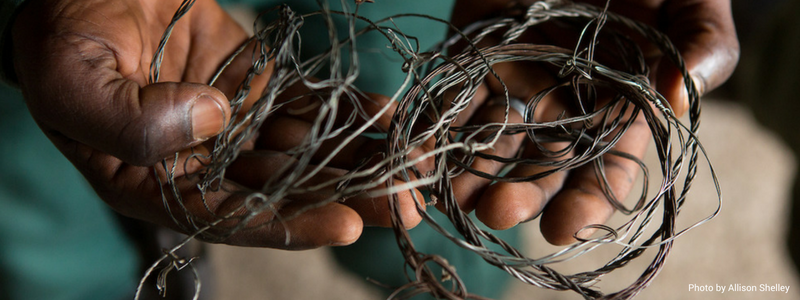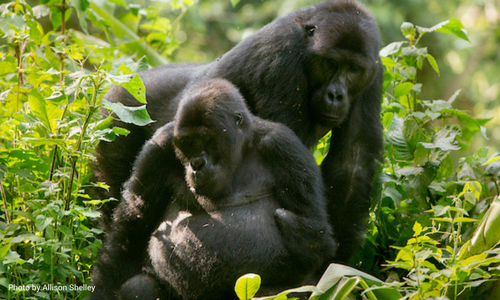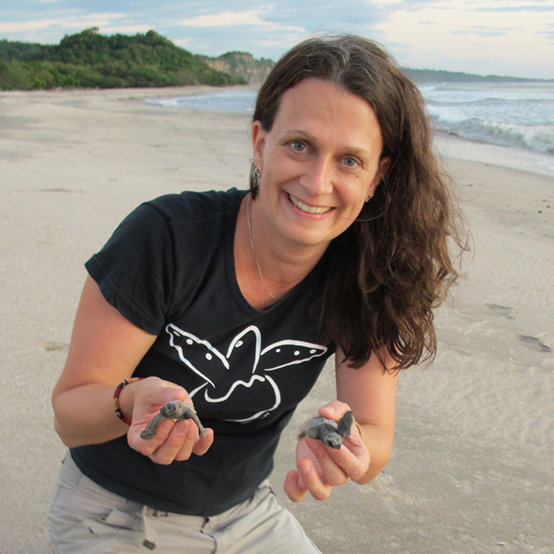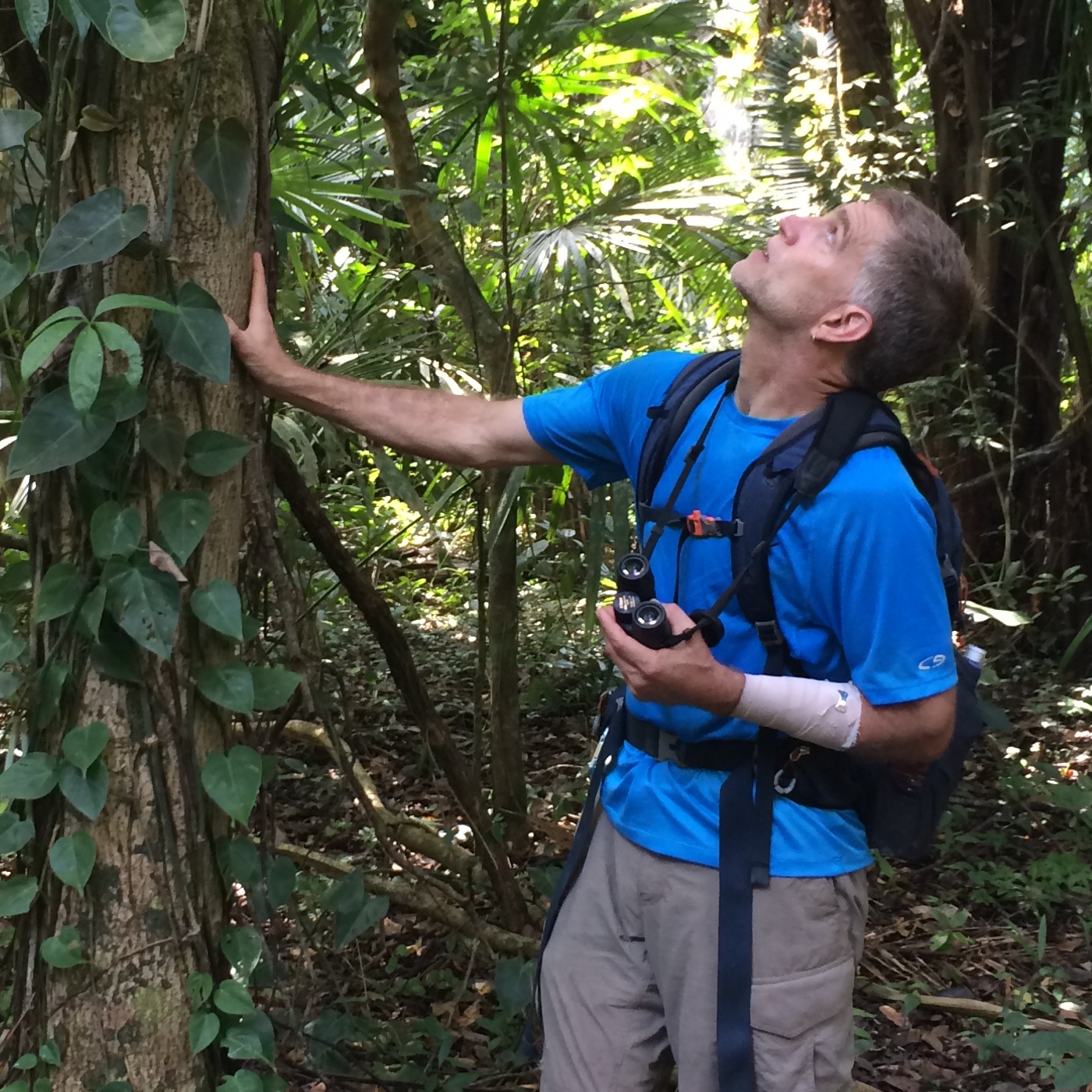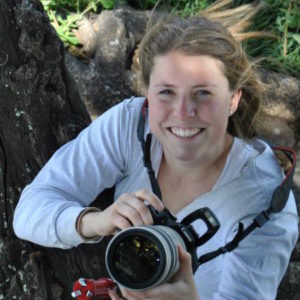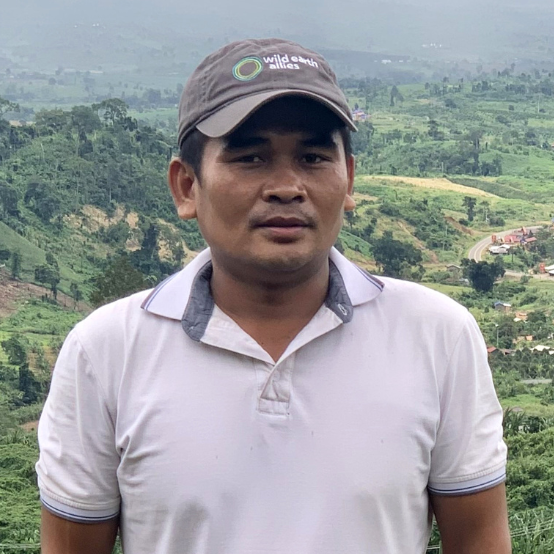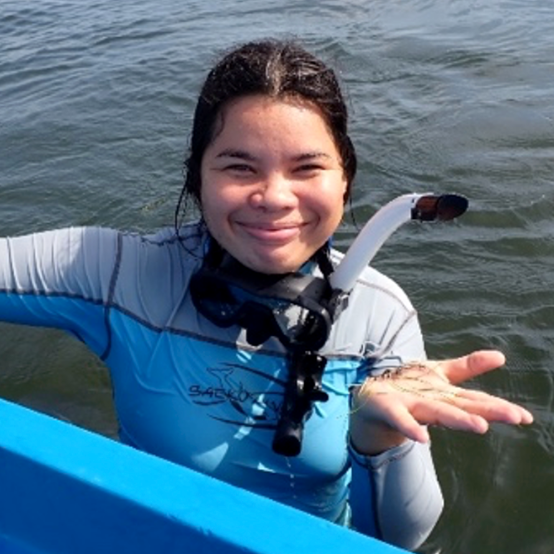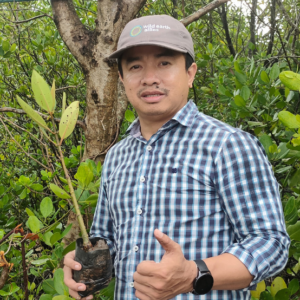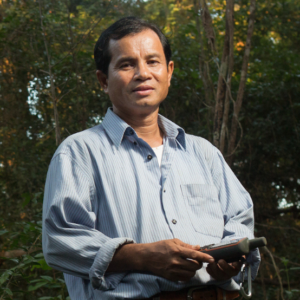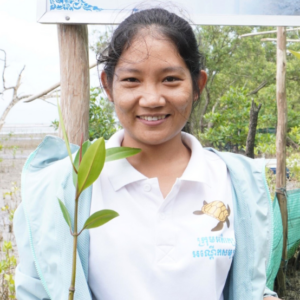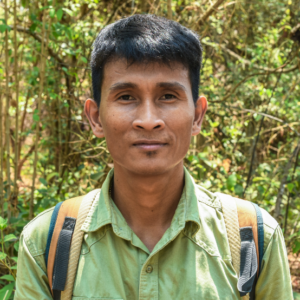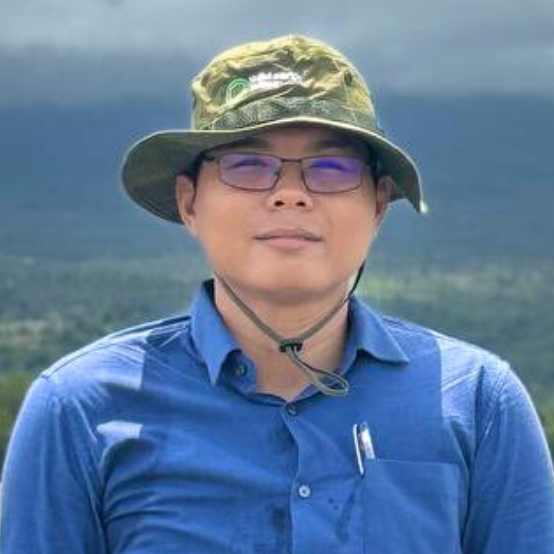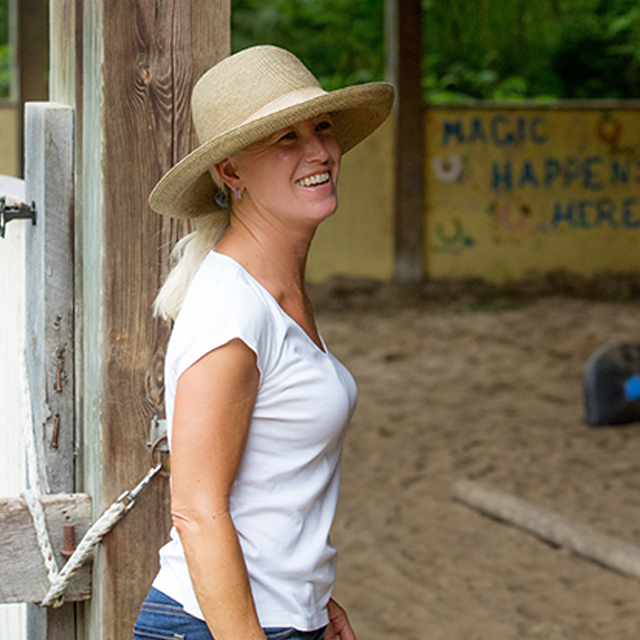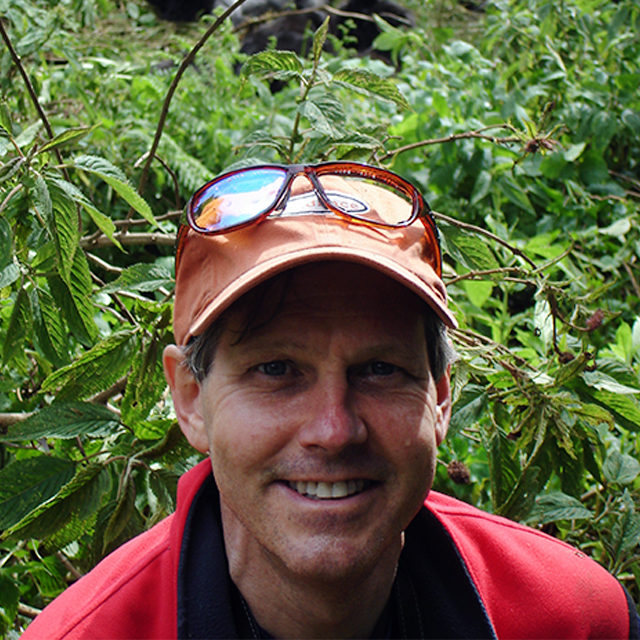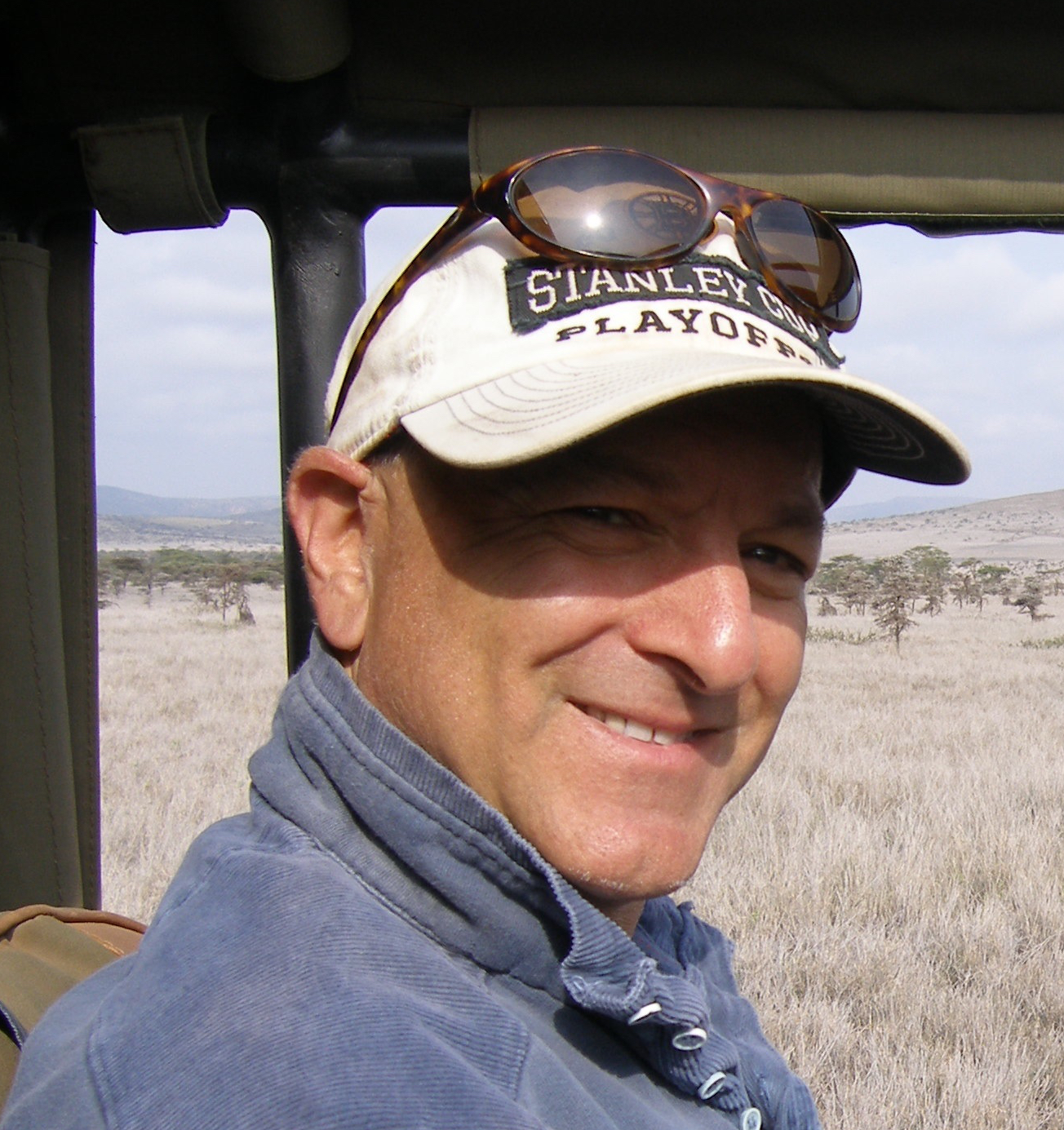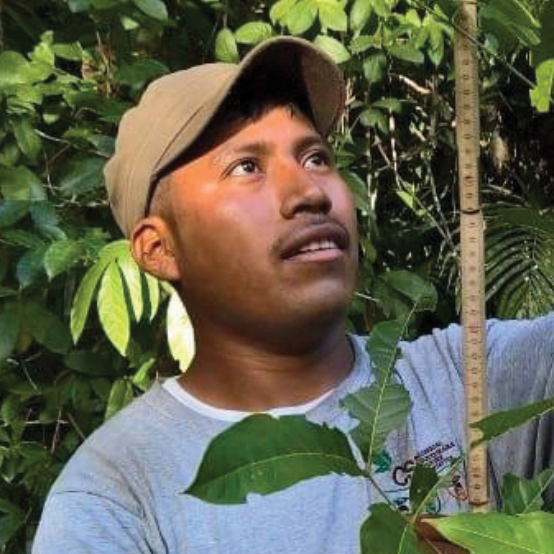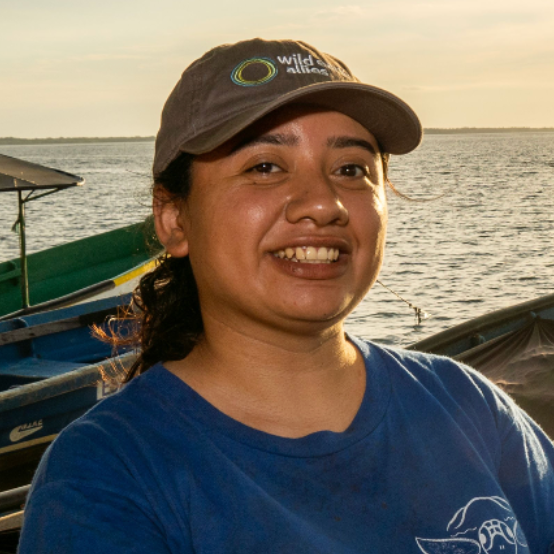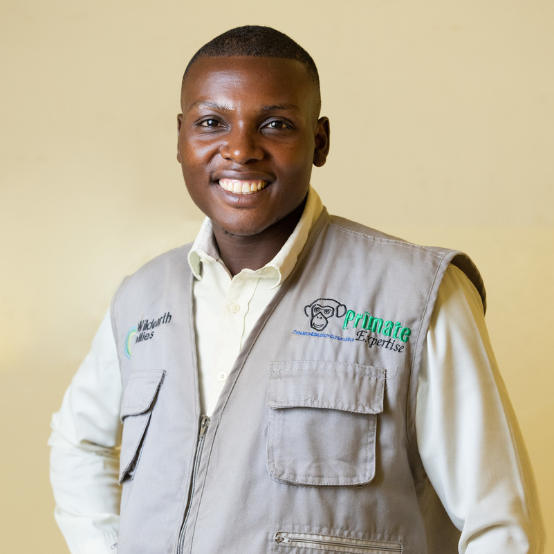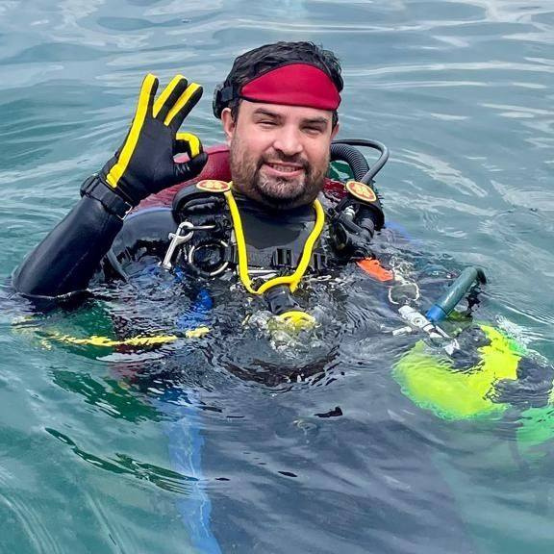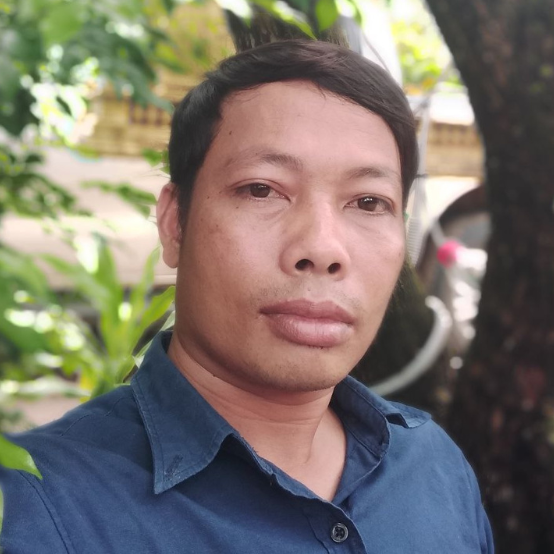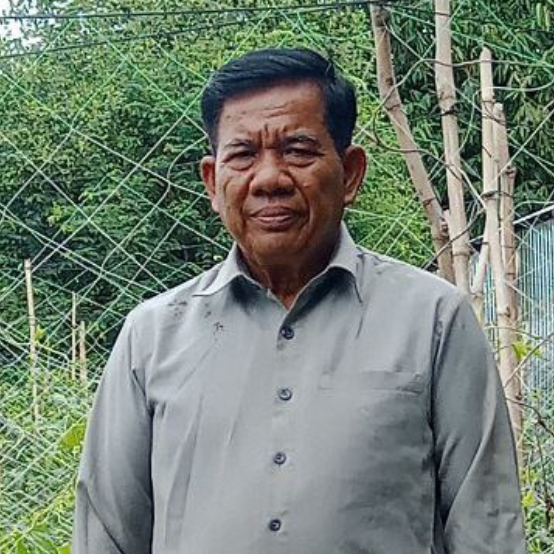A Major Threat to Grauer’s Gorillas
Snaring is one of the main threats to wildlife within Kahuzi-Biega National Park in eastern Democratic Republic of the Congo (DRC). Poachers use cables or wires to make traps for small antelopes, wild pigs, or other game. Unfortunately, gorillas can also get caught in these wire traps. Some, like Meteo, shown below, have lost limbs while others have died. Meteo, who was trapped in a snare five years ago and lost his left hand, is a member of the Chimanuka Group.
Independent photojournalist Allison Shelley captured striking images underscoring the importance of the anti-poaching work of our Congolese partner Primate Expertise (PEx), led by founder and executive director Dr. Augustin Basabose.
A subadult male Grauer’s gorilla named Meteo, left, lost his left hand in a snare trap. He and blackback Nabanga, right, are members of the Chimanuka group in Kahuzi-Biega.
Snare Removal and Anti-Poaching Patrols
PEx trains and equips park rangers to conduct regular anti-poaching and snare removal patrols. Patrols also collect information subsequently used by Dr. Basabose to assess how snare-induced injuries impact ape behavior.
PEx works closely with Congolese Institute for the Conservation of Nature (ICCN) to implement a snare-removal program within the park’s upland sector, mitigating a key threat to gorillas and other wildlife.
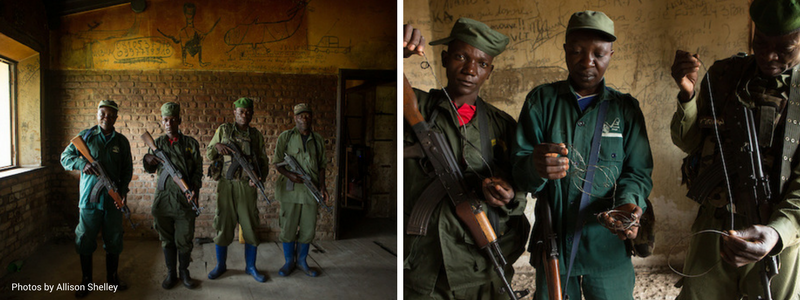 Left to right, park rangers Prince Makanda, Augustin Kafunzi, Mubila Kitungano, and Mirindi Bashizi, at the Tshibati ranger outpost just outside of Kahuzi-Biega (left image). Left to right, park rangers Augustin Kafunzi, Prince Makanda and Mubila Kitungano hold snares recovered from Kahuzi-Biega (right image).
Left to right, park rangers Prince Makanda, Augustin Kafunzi, Mubila Kitungano, and Mirindi Bashizi, at the Tshibati ranger outpost just outside of Kahuzi-Biega (left image). Left to right, park rangers Augustin Kafunzi, Prince Makanda and Mubila Kitungano hold snares recovered from Kahuzi-Biega (right image).
Ecological Monitoring and Research Reduce Snaring
Camera traps can be used to help find animals injured by snares, assess seasonal population movement, and identify wildlife sharing the same habitat as gorillas. Together with PEx, we have established an effective biomonitoring system using camera traps and wildlife surveys to document Grauer’s gorilla population, ecology, and behaviors.
These field observations are analyzed and translated into timely management response. For example, patrols can be shifted to areas experiencing poaching pressures in real time. The sustained presence of the PEx research team in Kahuzi-Biega also deters poachers and strengthens protection of Grauer’s gorilla and other wildlife.
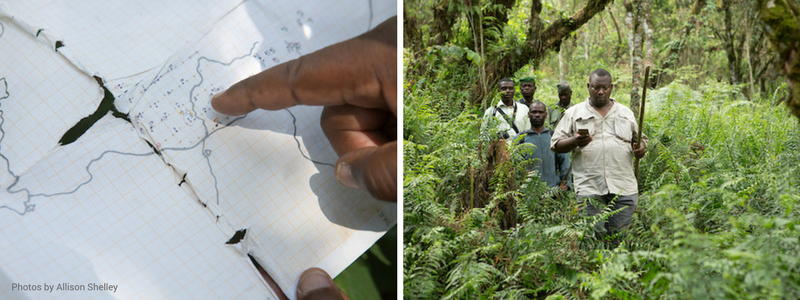 Dr. Augustin Basabose uses a hand-drawn map to locate a camera trap that PEx has placed in Kahuzi-Biega (left). Dr. Basabose treks with a group of researchers, rangers and trackers (right).
Dr. Augustin Basabose uses a hand-drawn map to locate a camera trap that PEx has placed in Kahuzi-Biega (left). Dr. Basabose treks with a group of researchers, rangers and trackers (right).
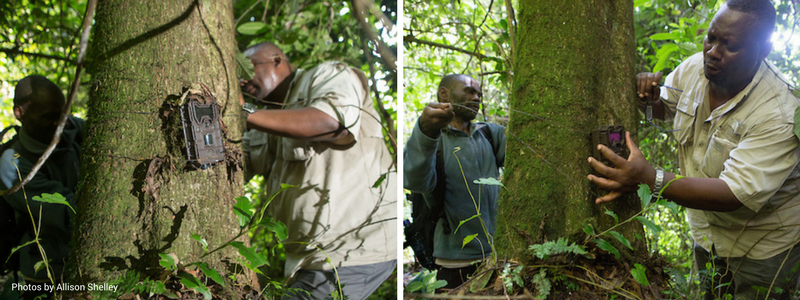 Tracker Luoko Mutabunga (left, both images) and Dr. Augustin Basabose (right, both images) unmount one of the camera traps that PEx has placed in Kahuzi-Biega.
Tracker Luoko Mutabunga (left, both images) and Dr. Augustin Basabose (right, both images) unmount one of the camera traps that PEx has placed in Kahuzi-Biega.
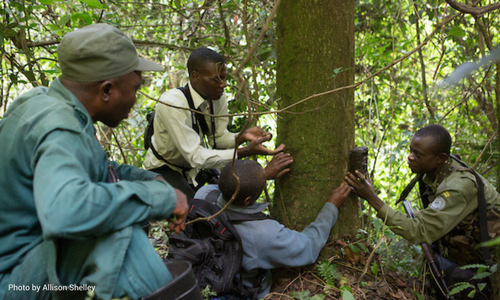
Left to right, park ranger Prince Makanda watches as PEx conservation scientist Michael Baraka, tracker Luoko Mutabunga, and head park ranger Mubila Kitungano unmount a camera trap in Kahuzi-Biega.
Expanding Programs to Surrounding Area
PEx expanded its surveillance program by placing 10 additional camera traps at the park’s boundary to document crop raiding events and identify animals that cross into community farmland. The aim is to reduce conflict between farmers and park authorities.
In recent years, farmland has extended to the edge of the park where there is increasing contact between foraging wildlife and farmers. We have done similar work in Cambodia with Asian elephants and farmers living on the edge of Prey Lang forest in order to reduce human-wildlife conflict.
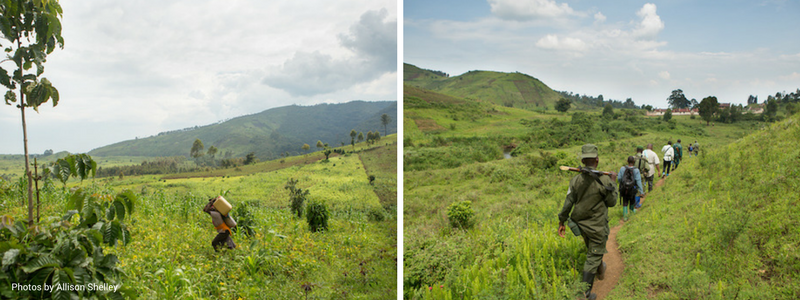 A woman carries water through farmland bordering Kahuzi-Biega (left). A group of rangers, trackers, and PEx researchers returns from Kahuzi-Biega through farmland (right).
A woman carries water through farmland bordering Kahuzi-Biega (left). A group of rangers, trackers, and PEx researchers returns from Kahuzi-Biega through farmland (right).
Learn more about our work with great apes—watch for new stories on Facebook and Twitter, sign up for our emails, and visit our website.
Follow Primate Expertise news on Facebook and Twitter.
Explore earlier posts featuring the first-hand experience of independent photojournalist Allison Shelley including a closer look at the Chimanuka Grauer’s gorilla group.

